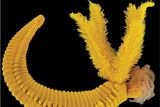Now Reading: 700-Year-Old Document Challenges Authenticity of Shroud of Turin
-
01
700-Year-Old Document Challenges Authenticity of Shroud of Turin
700-Year-Old Document Challenges Authenticity of Shroud of Turin

Fast Summary
- A newly-discovered 14th-century treatise by Nicole Oresme is now the oldest-known written rejection of the authenticity of the Shroud of Turin.
- Oresme, a prominent philosopher adn later Bishop of Lisieux, claimed that a shroud presented as authentic in Lirey during the 1370s was fraudulent.
- The Shroud, believed by many too be Jesus Christ’s burial cloth, has been dated to the 13th or 14th century through radiocarbon analysis and other scientific studies.
- Before this revelation, the earliest known written account rejecting its authenticity came from the Bishop of Troyes in 1389, who had referenced an earlier account-likely Oresme’s treatise.
- Ancient evidence places the Shroud in Lirey during much of the medieval period before it was removed around 1355 on orders from church authorities amid fraud accusations. Pope Clement VII formally declared it fake later in 1389.
indian Opinion Analysis
the discovery adds historical depth to ongoing debates over religious artifacts’ authenticity and contextualizes them within medieval Europe’s intellectual discourse.For India-a country rich in interconnected religious narratives-this advancement highlights how faith traditions interact with critical inquiry globally. With figures like Oresme championing rational explanations for phenomena even centuries ago, this rediscovery serves as a reminder of humanity’s long-standing efforts to reconcile belief with reason.



























